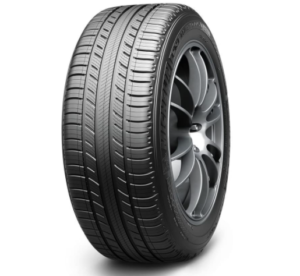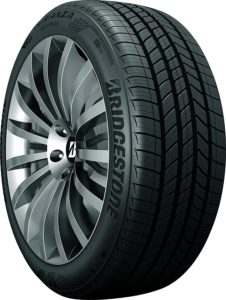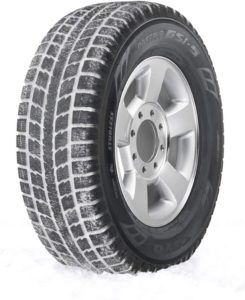Finding good tires for a BMW 328i can be a daunting task, unless you know what to look for.
Many cars that you will find in the market are targeted at drivers that want a comfortable and refined driving experience, as many drivers today do not care much for performance or driving dynamics. BMW is an exception though, as the company aims to create cars for enthusiasts everywhere – including the 328i.
To make the most of the BMW 328i, you need a good tire set, which means you must look for those that provide strong braking, excellent traction, and impressive levels of cornering grip. They should also be comfortable on the road and quiet, since the car itself is a performance sedan, while also maintaining durability. Since not all options will work equally well for everyone, we have outlined a range of tires you can consider for your 328i that fit your preferences and the environments you drive on.
Contents
- 1 Best tires for BMW 328i – Comparison table
- 2 Reviews of the best tires for BMW 328i
- 2.1 Michelin Premier A/S All-Season Radial tire – Best overall pick
- 2.2 Continental Winter Radial tire – Best for icy and snowy conditions
- 2.3 Bridgestone Turanza touring tires – Best for comfort
- 2.4 Cooper Ultra-Touring tire – Best for budget buyers
- 2.5 Toyo Observe GSi-5 Studless tire – Best performance winter tires
- 3 Buying Guide for the best BMW 328i tires
- 4 What to consider when getting a tire for your BMW 328i
- 5 FAQs
- 6 Conclusion
Best tires for BMW 328i – Comparison table
Tire | Best for | Price |
|---|---|---|
Michelin Premier A/S 225/45R18 | All-season usage | |
Continental WinterContact Radial tire | Icy and winter conditions | |
Bridgestone Turanza Extra Load touring tire | All-round comfort | |
Cooper CS5 Ultra Touring all-season tire | Buyers on a budget | |
Toyo Observe GSi-5 Winter Performance tire | Harsh and wet weather |
Reviews of the best tires for BMW 328i
Michelin Premier A/S All-Season Radial tire – Best overall pick

Michelin Premier A/S All-Season Radial Tire 225/45R18 91V
- Use of EverTread technology enhances performance on wet and dry conditions
- Premier A/S gives additional winter traction
This is the closest you can get to perfection when considering getting a tire set for your BMW 328i, as Michelin goes a long way to ensuring its handling is excellent despite its tread design as an all-season one. While its cornering grip is not the best in comparison to other performance tires, it comes quite close and you can hardly tell the difference when giving it an initial look; but it offsets this through its impressive steering feel and responsiveness.
The most impressive aspect is its wet traction, since it uses EverTread technology that increases the grooves on the tire as it continues to wear down and maintains the integrity of the wet traction. This also allows it to perform excellently in winter conditions, although it is best to find winter-specific tires.
Although its focus is on enhancing performance, it is comfortable and very quiet like you would expect in Michelin tires. The only drawback is the 60,000 mile treadwear warranty that is quite short compared to most tires, and it is also expensive.
Pros
- Taut and responsive steering
- Best in dry-cornering traction and grip
- Very smooth ride
- Excellent wet traction
- Suppresses road noise very well
- EverTread technology keeps safe movements in wet conditions
Cons
- Treadlife is short
- Pricey
Continental Winter Radial tire – Best for icy and snowy conditions

Continental WinterContact SI Winter Radial tire 205/55R16 XL 94H
- Comes with PolarPlus+ Technology to give the ultimate grip in wet, ice, and snow conditions
- Incorporates Alignment Verification system to help in early vehicle alignment
This is the ice and snow tire offering from the company, and its studless design makes it suitable for vehicles like minivans, crossovers, coupes, and sedans. Since its design allows it to give you the best performance in winter conditions, it will include features that enhance its traction on slippery surfaces.
It uses PolarPlus+ Technology that combines with Continental’s +Silane additives, and this improves its grip during extreme winter conditions even in massive temperature drops. The tire comes with high-density variable sipes on its edges as well, helping to increase the tread numbers on its surface and letting the grooves improve their grip on a snowy road. The bases of the grooves also have 3D edges, which serve to enhance the braking power when you move in deep snow.
Overall, it complies with the snow capability standards set by the industry, and therefore boasts a mountain/snowflake emblem on its exterior. Additionally, it includes a unique tread depth mark indicator of its tire life to help you know when to replace it, with the recommendation being to replace all the four tires when you do so to ensure the best performance.
Pros
- Extensive size range for enhanced compatibility
- Excellent grip in slush, snow, and ice
- High performance in dry conditions
Cons
- Does not have a Uniform Tire Quality Grade (UTQG) rating, so there is not much information on the treadlife expectancy
Bridgestone Turanza touring tires – Best for comfort

Bridgestone Turanza QuietTrack All-Season touring tire 205/50R17 93V
- In-groove ridges that help enhance snow traction and prevent high-frequency noise
- 3D full-depth sipes and QuietTrack technology help in reducing road noise and increase traction
If comfort is a major concern in your driving experience, then the Bridgestone Turanza tires go a long way to achieving this goal. The noise levels are almost non-existent, even when you drive at highway speeds, and its ride quality is superb, even over larger and smaller imperfections.
Although comfort is the ultimate goal, it still gives you impressive levels of predictable handling. While the tires are not the most responsive you will find on the market, they still manage to give you strong braking capabilities, excellent levels of traction, and very good cornering grip. It also has solid performance on wet surfaces, thanks to the traction, excellent hydroplaning resistance, and short braking distances. Considering its design as an all-season tire, it also has very good traction on light snow surfaces.
Among its best features is the long 80,000-mile treadwear warranty, which is a record for most tires. If you can afford it, it will be a purchase that will serve you well for many years.
Pros
- Very comfortable and quiet
- Good cornering and predictable handling
- Hydroplaning and excellent wet traction
- Very good treadwear warranty
- Usable in light snow
Cons
- Expensive
- Not always the most responsive
Cooper Ultra-Touring tire – Best for budget buyers

Cooper CS5 235/60R18 103V Ultra-Touring All-Season tire
- All-season premium luxury touring tire with premium limited warranty
- Treadwear warranty of 70,000 miles
If you want to save some cash while getting a high-quality BMW 328i set of tires, you should consider getting the Cooper CS5 Ultra Touring. The company offers their tires at prices that are much lower compared to the competition without sacrificing on the inclusion of advanced technology.
Its performance on the road is what you would expect from a high-end tire purchase, as it communicates effectively with the driver and has high responsiveness levels. Even for a more enthusiastic driver, it has excellent cornering grip and short braking distances.
Its best attributes shine when you use it in wet conditions, as you will notice its excellent grip on the road and noiseless movements even as you move over bumps. The treadwear warranty is quite long, standing at 70,000 miles, which is impressive considering its price – the only environment it does not fare in very well is on snowy roads.
Pros
- Highly responsive steering
- Very good wet traction
- Very good cornering grip and strong braking
- Long treadwear warranty
- Budget-friendly option
Cons
- Snow traction is not as impressive
Toyo Observe GSi-5 Studless tire – Best performance winter tires

265/70-17 Toyo Observe Winter Performance studless tire
- Advanced multi-directional sipe technology ensures maximum grip
- Microbit compounds enhance performance in ice and snow
Toyo is a well-known brand that manufactures high-performance winter tires, and this tire caters to the needs of a BMW 328i owner to give you the best performance in the harshest snow and icy conditions.
It sticks to the road thanks to its impressive linear grip, and will give you the opportunities for excellent acceleration regardless of whether you are moving on slush, ice, or snow; it is difficult to find tires that offer similar levels of performance. Its center also has a rib design that ensures you drive in a straight-course regardless of the surface, and the design increases its traction on icy surfaces to improve your road safety.
It has a non-studded design to give you excellent handling, especially at less than 45 degrees, and its tires have a deep thread pattern to improve wide-area weight distribution. Despite its solid linear grip though, lateral grip is not a strong point here, so it will not give you a progressive grip, and its recovery also takes some time to achieve.
Pros
- Excellent linear grip
- Very good traction on icy surfaces and snowy roads
- Very good road feel
Cons
- Lateral grip can use some improvements
Buying Guide for the best BMW 328i tires
Types of car tires
Nearly all BMW cars come with run-flat tires as the default, and for good reason – they allow you to drive at 50 mph speeds and for up to 50 miles, even when the tire suffers a puncture. There is an additional reason behind their inclusion, and that is to increase the boot space without requiring a spare.
However, they are not the only options on the market, and choosing a tire requires you to know the different types of tires you can use on your car. These are:
- Low-rolling resistance tires: These aim to reduce the resistance levels, which helps you save on fuel. The rubber that comprises them is different from that in regular tires, so they have a smoother tread and offer less comfort.
- M + S: An acronym for mud and snow, and these are usually built for all weather conditions.
- Off-road tires: These are comprised of higher levels of rubber, making them perform efficiently on unpaved surfaces. However, this does not necessarily mean they will perform as efficiently on a paced surface.
- Run flat tires: Allow you to drive for up to 50 miles even after your tire is flat. You should only use them on a car that has a monitoring system for your tire pressure, or any car that is approved for their usage; otherwise, you will not know you have a flat tire.
- Racing slicks: These have little to no tread pattern, which ensures that the maximum surface area of the tire is hitting the ground. However, they are not meant for rainy or icy weather conditions, or for street use.
- DOT R compound tires: These are meant to follow DOT requirements. While they may have grooves in their design and are safe for street driving, they are bad for driving on wet roads and pavements.
- Stud snow tires: These are winter tires that have metallic studs that create traction by chipping into the ice. However, they are not permitted in some states, so you need to check legal regulation before using them during winter.
What to consider when getting a tire for your BMW 328i
Examine the tread
Before you spend money on new tires, always test the tread of your old tires first instead of relying on salesmen to tell you what works best for you. Doing this is easy, as you only need to do a penny test rather than doing a mileage rule.
Get a penny and with its head facing down, stick it between two treads. If you can see the entire head of the image on the coin, that is a clear indication that you need new tires. If the treads are deep enough to cover most of the coin, the tire is safe to use for that time.
Know the tire codes
Many consumers unfortunately make the wrong choice when getting tires for their cars, and correcting this mistake is as easy as examining the tire codes on the tire sidewall, which consist of both numbers and letters. These codes indicate the performance, type, and size of the tire.
The tire width is indicated by the first three-digit number – for instance, a tire size of 235/60 R18 shows that the tire has a width of 235 millimeters when you measure it from sidewall to the next sidewall. The next two-digit numbers after the slash mark – in this case, 60 – indicate the Aspect ratio, which is the height of the tire width to the cross-sectional height. This means that the height is 60% of the width of the tire. The more this aspect ratio, the bigger the sidewall is.
If the tire has an ‘R’ sign, this is the radial indicator, which is the number of layers across the tire. The other code is the wheel diameter, which is the number alongside the ‘R’ sign, so a R18 tire means the tire has a radial diameter of 18 inches.
The weather you drive in
Your location and its weather plays a major role in the tires you purchase, since not all tires are equal. If you live in a tropical climate or a mild temperate zone that does not experience heavy winters, an all-weather tire makes more purchasing sense, as it is very good for highway driving. Additionally, a performance tire is also good because it maintains comfort and high traction while moving at high speeds.
However, if your area is a snow-covered location, it is best to buy a winter tire to give you plenty of traction, which an all-weather tire may not do as efficiently.
Know what you need from replacement tires
Chances are high that you have used the car for some time, so you know its shortcomings – for instance, you may need additional comfort when driving, longer tread life, more steering control, or lower noise levels. By default, car manufacturers will fit a new car with standard tires that can be used in most cars, so you can ask your tire technician about the best replacements if you want to use new tires.
Know what you intend to spend
Make sure to do plenty of research and consider the tread wear warranty, as this will give you an idea of how long the tires will last. If you use the car frequently, add an additional cost for hazard insurance, and ask if the seller offers complimentary tire services like repairs and rotations.
FAQs
Is there a recommended tire pressure for the BMW 328i?
This will depend on the wheel size, with most trims and models using a 32 psi on both ends. However, if your tires are equal in size for rear and front sections, you should use a rear pressure of 35 psi and a front pressure of 32 psi. If you are unsure, you can check the owner’s manual or your car door sill.
How often should I replace the tires?
It is best to do so every 4 to 5 years, even if they still have ample mileage left. If your annual mileage is very high, you should replace the tires more frequently.
Is it advisable to replace a BMW run-flat tire with a regular one?
Yes, you can, as long as the replacements satisfy the recommendations of the car manufacturer.
Conclusion
When selecting your preferred BMW 328i set of tires, it is important to consider multiple factors in your decision because safety is the most important goal, and choosing premium tires ensures you achieve this goal.

